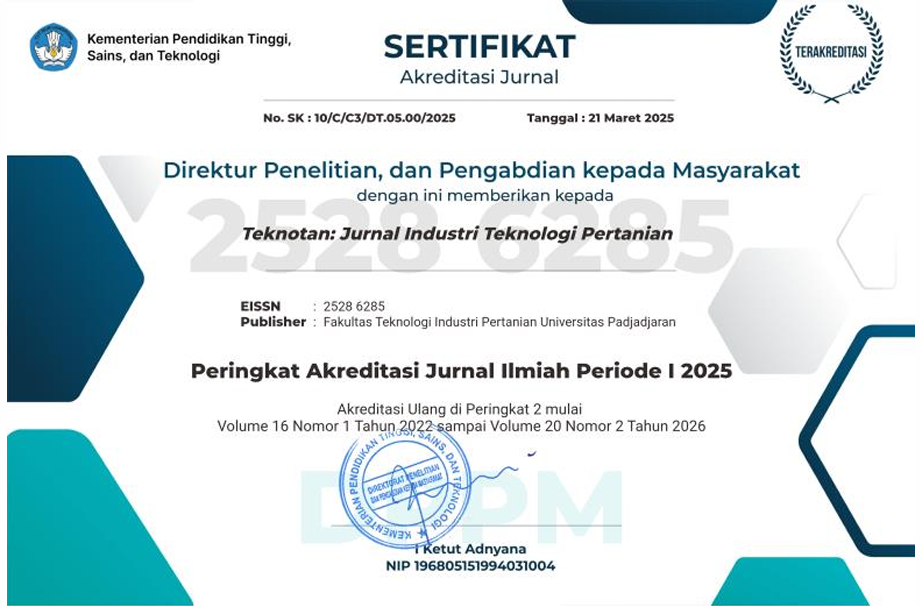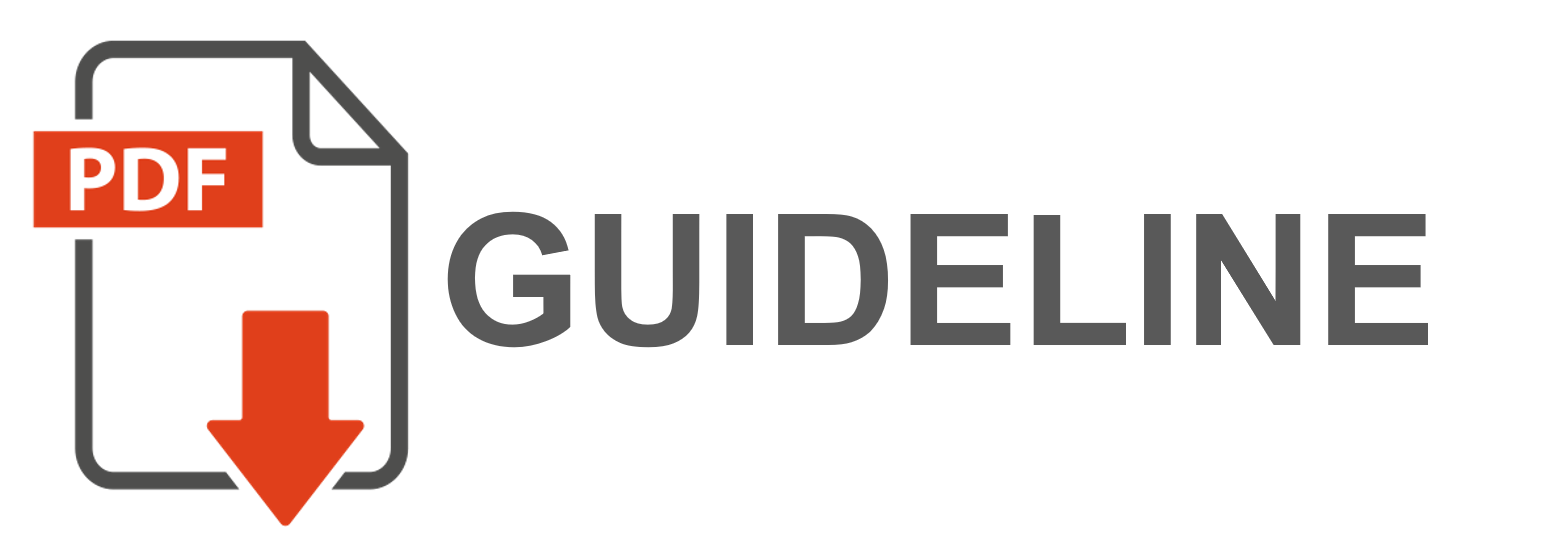Upcycling Cangkang Kelapa Sawit Menjadi Green Filler Teraktivasi Ultrasonik dan Aplikasinya Sebagai Pengisi Kompon Karet
Abstract
Cangkang kelapa sawit (CKS) merupakan salah satu hasil samping produksi industry pengolahan sawit yang hingga saat ini, di Indonesia, masih belum termanfaatkan secara optimal. Salah satu pemanfaatan CKS sebagai bahan dengan serat tinggi yaitu dengan cara mengubahnya menjadi material tinggi karbon. Material karbon ini dapat digunakan sebagai salah satu alternatif bahan pengisi bagi industry pengolahan karet untuk menggantikan Sebagian besar carbon black (CB) yang tidak ramah lingkungan. Tujuan dari penelitian ini adalah untuk mengetahui pengaruh substitusi CB menggunakan green filler CKS teraktivasi ultrasonik terhadap karakteristik mekanis kompon karet berbahan dasar lump. CKS melalui proses pirolisis diubah menjadi arang dan diaktivasi menggunakan ultrasonic dengan frekuensi 40 kHz selama 15 menit. Arang aktif CKS yang diperoleh kemudian ditambahkan ke dalam formulasi kompon sebagai pengganti substitusi carbon black dengan formulasi berbeda sesuai dengan perlakuan. Kompon yang dihasilkan diuji karakteristik curing-nya sebelum dicetak menggunakan hot press. Vulkanisat yang diperoleh kemudian diuji karakteristik mekanisnya yang meliputi kekerasan, kuat Tarik, perpanjangan putus, dan young modulus. Kompon dengan 100% carbon black menghasilkan nilai torsi minimum (ML), torsi maksimum (MH), waktu pemasakan optimum (TC90) dan waktu scorch (ts2) sebesar 13,02 kgf-cm, 34,54 kgf-cm, 232 detik, dan 101 detik secara berturut-turut. Kompon dengan komposisi filler 30 phr CB dan 30 phr arang CKS teraktivasi ultrasonic memiliki ML, MH, TC90, dan ts2 sebesar 9,35 kgf-cm, 12,28 kgf-cm, 98 detik, dan 91 detik secara berturut-turut.
Keywords
Full Text:
PDF (Bahasa Indonesia)References
Abbas, K., Muizz Mohamed Ghazali, A., & Kooi Ong, S. (2019). The Effect of Particle Size of Palm Kernel Shell on the Mechanical Properties and Physical Properties of Filled Natural Rubber Vulcanizates. Materials Today: Proceedings, 19, 1599–1607. https://doi.org/10.1016/j.matpr.2019.11.188
American Standard Testing and Material. (2019). Test Method for Rubber PropertyVulcanization Using Oscillating Disk Cure Meter. ASTM International. https://doi.org/10.1520/D2084-19A
Ar-Raudhoh, M. T. N. ’Aisyah, Haziq, M. F. M., Zafirah, Z. A., Liyana, M. S. N., & Hayawin, Z. N. (2023). Comparative Studies On Cure Characteristics And Mechanical Properties Of Oil Palm Biomass Filled Natural Rubber Composites. Journal of Oil Palm Research. https://doi.org/10.21894/jopr.2023.0009
Bardha, A., Prasher, S., & Dumont, M.-J. (2024). Waste biomass-derived rubber composite additives: Review of current research and future investigations into biowaste tire formulation. Biomass and Bioenergy, 183, 107149. https://doi.org/10.1016/j.biombioe.2024.107149
Bhatia, S. C., & Goel, A. (2019). Rubber Technology. New Delhi: Woodhead publishing India Pvt Ltd.
Chikri, Y. A., & Weltz, W. (2020, May 29). Decarbonisation options for the Dutch carbon black industry | PBL Netherlands Environmental Assessment Agency. Retrieved March 19, 2024, from https://www.pbl.nl/en/publications/decarbonisation-options-for-the-dutch-carbon-black-industry
Chin, T. Y., Yakub, I., & Hin, T.-Y. Y. (2020). Evaluation of Catalysts Derived from Palm Kernel Shell Carbon in a Passive NOx Removal from a Diesel Engine Exhaust. Emission Control Science and Technology, 6(3), 336–344. https://doi.org/10.1007/s40825-020-00164-0
Daud, S., Ismail, H., & Bakar, A. A. (2016). The Effect of 3-aminopropyltrimethyoxysilane (AMEO) as a Coupling Agent on Curing and Mechanical Properties of Natural Rubber/Palm Kernel Shell Powder Composites. Procedia Chemistry, 19, 327–334. https://doi.org/10.1016/j.proche.2016.03.019
Donnet, J.-B., Bansal, R. C., & Wang, M.-J. (2018). Carbon Black: Science and Technology (2nd ed.; J.-B. Donnet, Ed.). Routledge. https://doi.org/10.1201/9781315138763
Greenough, S., Dumont, M.-J., & Prasher, S. (2021). The physicochemical properties of biochar and its applicability as a filler in rubber composites: A review. Materials Today Communications, 29, 102912. https://doi.org/10.1016/j.mtcomm.2021.102912
Inegbedion, F., Igbonazobi, L. C., Imasuen, A. O., & Inetianbor, C. O. (2021). Characterization Of Low Density Polyethylene Waste Filled With Palm Kernel Shell. International Journal of Engineering Technologies and Management Research, 8(4), 71–78. https://doi.org/10.29121/ijetmr.v8.i4.2021.918
Insyirah, F., & Khair, M. (2021). Pembuatan Karbon Aktif Secara Kimia Hijau dari Tandan Sawit dengan Aktivasi Ultrasonik. Periodic, 10(1), 28–32. https://doi.org/10.24036/p.v10i1.110612
Kasih, T. S. D., Taufik, M., & Khair, M. (2020). PEMBUATAN KARBON AKTIF DARI LIMBAH CANGKANG KELAPA SAWIT (Elaeis guineensis) MENGGUNAKAN ULTRASONIK. Periodic, 9(2), 60–64. https://doi.org/10.24036/p.v9i2.110252
Kazemi, H., Mighri, F., & Rodrigue, D. (2022). A Review of Rubber Biocomposites Reinforced with Lignocellulosic Fillers. Journal of Composites Science, 6(7), 183. https://doi.org/10.3390/jcs6070183
Kementerian Keuangan Direktorat Bea dan Cukai. (2023, September 6). Bea Cukai Parepare Layani Ekspor Cangkang Sawit Indonesia ke Jepang. Retrieved October 15, 2024, from https://www.beacukai.go.id/berita/bea-cukai-parepare-layani-ekspor-cangkang-sawit-indonesia-ke-jepang.html
M. Ikumapayi, O., & T. Akinlab, E. (2018). Composition, Characteristics and Socioeconomic Benefits of Palm Kernel Shell Exploitation-An Overview. Journal of Environmental Science and Technology, 11(5), 220–232. https://doi.org/10.3923/jest.2018.220.232
Nicholas, A. F., Hussein, M. Z., Zainal, Z., & Khadiran, T. (2020). The effect of surface area on the properties of shape-stabilized phase change material prepared using palm kernel shell activated carbon. Scientific Reports, 10(1), 15047. https://doi.org/10.1038/s41598-020-72019-1
Nuyah, N. (2012). Penggunaan Arang Cangkang Kelapa Sawit sebagai Bahan Pengisi dalam Pembuatan Kompon Selang Karet. Jurnal Dinamika Penelitian Industri, 23(1), 78710. https://doi.org/10.28959/jdpi.v23i1.556
Oh, J., Yoo, Y. H., Yoo, I., Huh, Y., Chaki, T. K., & Nah, C. (2014). Effect of plasticizer and curing system on freezing resistance of rubbers. Journal of Applied Polymer Science, 131(2), app.39795. https://doi.org/10.1002/app.39795
Peterson, S. C. (2020). Coppiced Biochars as Partial Replacement of Carbon Black Filler in Polybutadiene/Natural Rubber Composites. Journal of Composites Science, 4(4), 147. https://doi.org/10.3390/jcs4040147
Peterson, S. C., Chandrasekaran, S. R., & Sharma, B. K. (2016). Birchwood biochar as partial carbon black replacement in styrene–butadiene rubber composites. Journal of Elastomers & Plastics, 48(4), 305–316. https://doi.org/10.1177/0095244315576241
Princi, E. (2019). Rubber: Science and Technology. In Rubber. De Gruyter. https://doi.org/10.1515/9783110640328
Rashidi, N. A., Bokhari, A., & Yusup, S. (2021). Evaluation of kinetics and mechanism properties of CO2 adsorption onto the palm kernel shell activated carbon. Environmental Science and Pollution Research, 28(26), 33967–33979. https://doi.org/10.1007/s11356-020-08823-z
Roy, K., Pongwisuthiruchte, A., Chandra Debnath, S., & Potiyaraj, P. (2021). Application of cellulose as green filler for the development of sustainable rubber technology. Current Research in Green and Sustainable Chemistry, 4, 100140. https://doi.org/10.1016/j.crgsc.2021.100140
Samuel, A. O. A. (2020). Assessment of Palm Kernel Shells as Partial Replacement of Coarse Aggregates in Highway Pavements. International Journal of Engineering Management, 4(2), 25–29. https://doi.org/10.11648/j.ijem.20200402.12
Suhas, Gupta, V. K., Singh, L. P., Chaudhary, M., & Kushwaha, S. (2021). A novel approach to develop activated carbon by an ingenious hydrothermal treatment methodology using Phyllanthus emblica fruit stone. Journal of Cleaner Production, 288, 125643. https://doi.org/10.1016/j.jclepro.2020.125643
Torres, L. F., McCaffrey, Z., Washington, W., Williams, T. G., Wood, D. F., Orts, W. J., & McMahan, C. M. (2021). Torrefied agro-industrial residue as filler in natural rubber compounds. Journal of Applied Polymer Science, 138(28), 50684. https://doi.org/10.1002/app.50684
Uchegbulam, I., Momoh, E. O., & Agan, S. A. (2022). Potentials of palm kernel shell derivatives: A critical review on waste recovery for environmental sustainability. Cleaner Materials, 6, 100154. https://doi.org/10.1016/j.clema.2022.100154
Wang, Z., Zhou, B., Liu, Z., Li, L., Zhou, K., Tian, T., … Wang, Z. (2024). Ultrasonic regeneration of activated carbon with the addition of gas flushing. Desalination and Water Treatment, 317, 100185. https://doi.org/10.1016/j.dwt.2024.100185
Yakum, R. N., Kingsly Mofor, W., & Nnoko Ngaaje, N. (2020). Influence of mechanical and physical properties of palm nut shell-plastic composite. International Journal of Engineering Science Technologies, 4(6), 30–38. https://doi.org/10.29121/ijoest.v4.i6.2020.128
DOI: https://doi.org/10.24198/jt.vol19n1.4
Refbacks
- There are currently no refbacks.
Indexed by:

This work is licensed under a Creative Commons Attribution 4.0 International License (CC BY-SA 4.0)


1.png)
.png)







